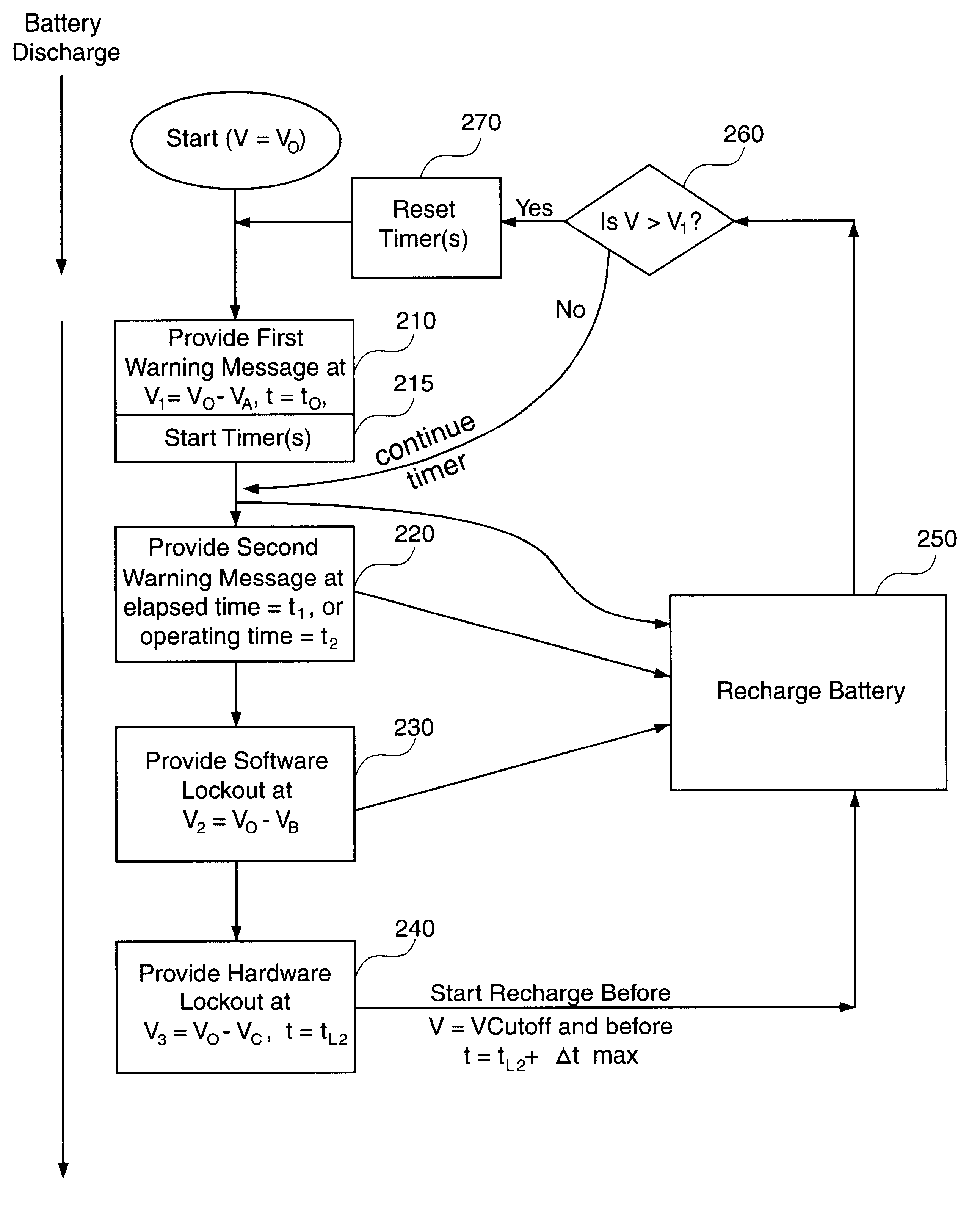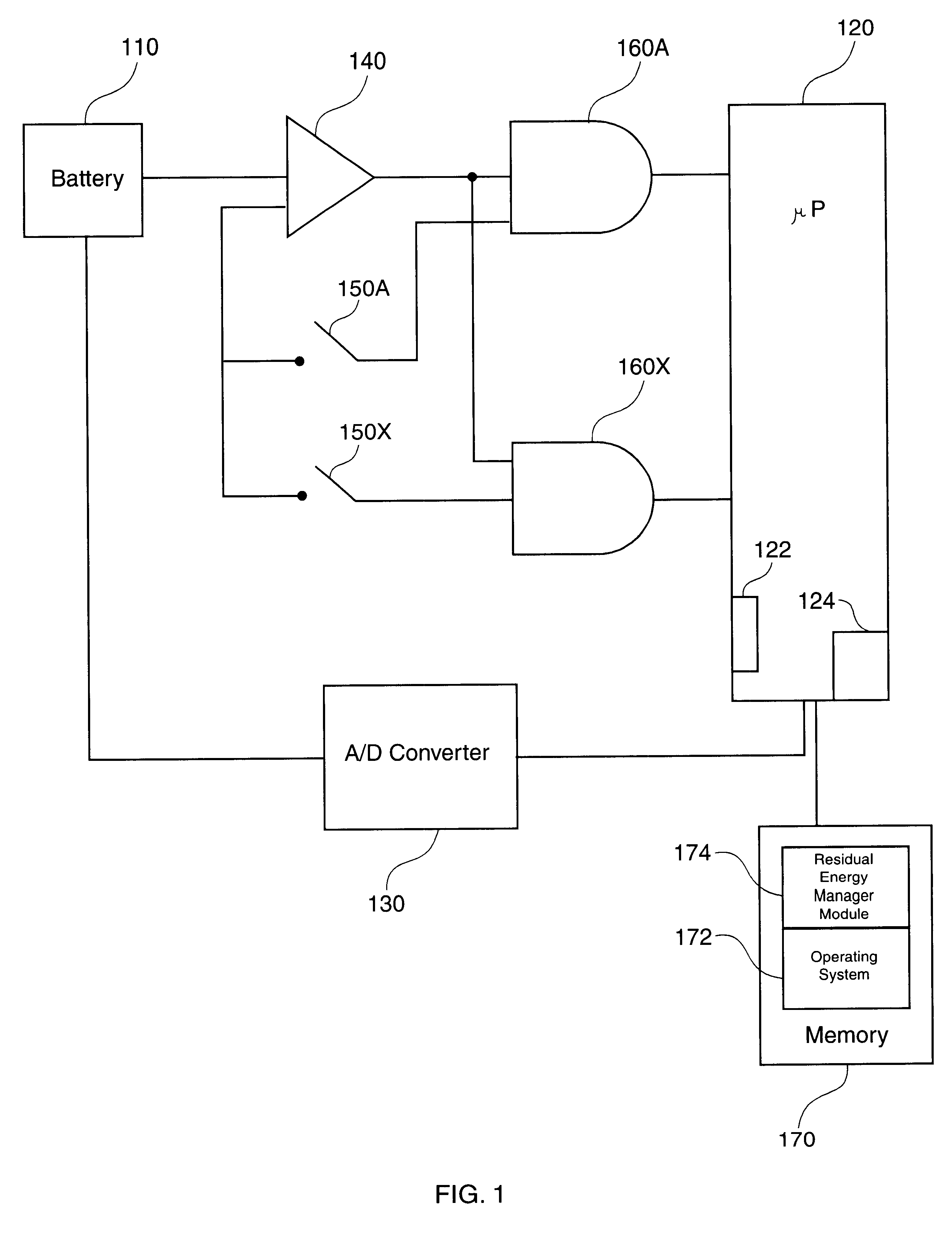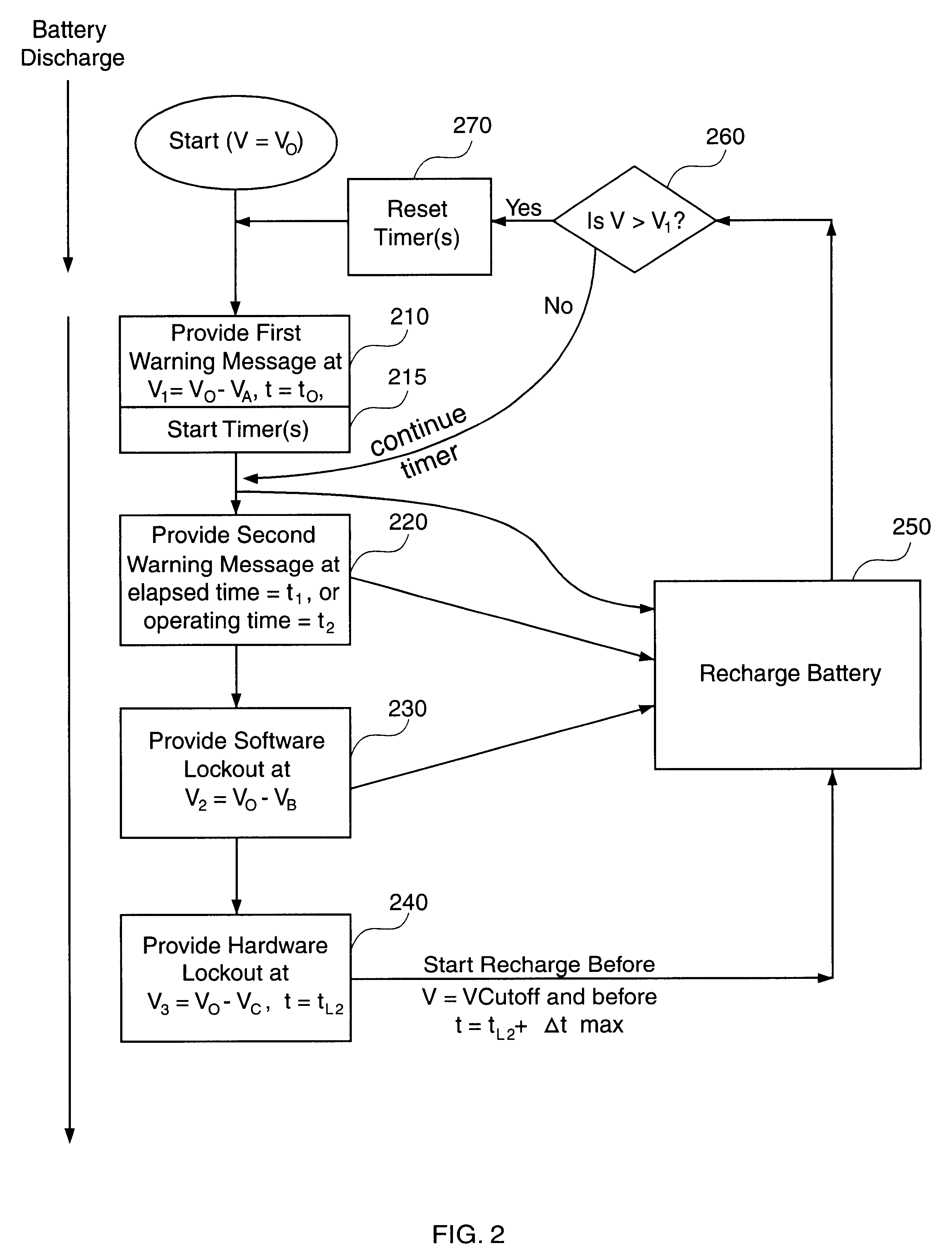Method and apparatus for using residual energy in a battery-powered computer
a technology of residual energy and battery-powered computers, applied in computing, power supply for data processing, instruments, etc., can solve problems such as too late for users to perform the desired pre-cutoff function, operating voltage based warning messages can fail to meet user expectations, and power computers cannot be powered
- Summary
- Abstract
- Description
- Claims
- Application Information
AI Technical Summary
Benefits of technology
Problems solved by technology
Method used
Image
Examples
examples
Specific embodiments of the invention are further described by the following, non-limiting examples which serve to illustrate in some detail various features of significance. The examples are intended merely to facilitate an understanding of ways in which the invention may be practiced and to further enable those of skill in the art to practice the invention. Accordingly, the examples should not be construed as limiting the scope of the invention.
first example
One example of a battery-powered computer 100 according to some embodiments of the invention uses a lithium-ion battery having discharge properties described by the discharge cycles in FIG. 3. The Sanyo UF612248 lithium-ion battery 110 represented by FIG. 3 has a rated capacity (1.0 C) of approximately 400 milliamp-hours for an initial charge of 4.1 volts.
FIG. 3 shows a first discharge cycle curve 300A for a lightly-loaded battery 110 where the discharge rate is approximately 80 milliamperes (mA). Energy efficient portable computers, such as the PalmV from Palm Computing, Inc., have battery 110 discharge rates similar to 80 mA (0.2 C, or one-fifth of the 1.0 C rated capacity) as represented in the first discharge cycle curve 300A. A second discharge cycle curve 300B is shown in FIG. 3 for comparison purposes only, and represents the curve for a moderately-loaded lithium-ion battery 110, e.g., 400 mA discharge rate. The third discharge cycle curve 300C represents a heavily-loaded lit...
PUM
 Login to View More
Login to View More Abstract
Description
Claims
Application Information
 Login to View More
Login to View More - R&D
- Intellectual Property
- Life Sciences
- Materials
- Tech Scout
- Unparalleled Data Quality
- Higher Quality Content
- 60% Fewer Hallucinations
Browse by: Latest US Patents, China's latest patents, Technical Efficacy Thesaurus, Application Domain, Technology Topic, Popular Technical Reports.
© 2025 PatSnap. All rights reserved.Legal|Privacy policy|Modern Slavery Act Transparency Statement|Sitemap|About US| Contact US: help@patsnap.com



